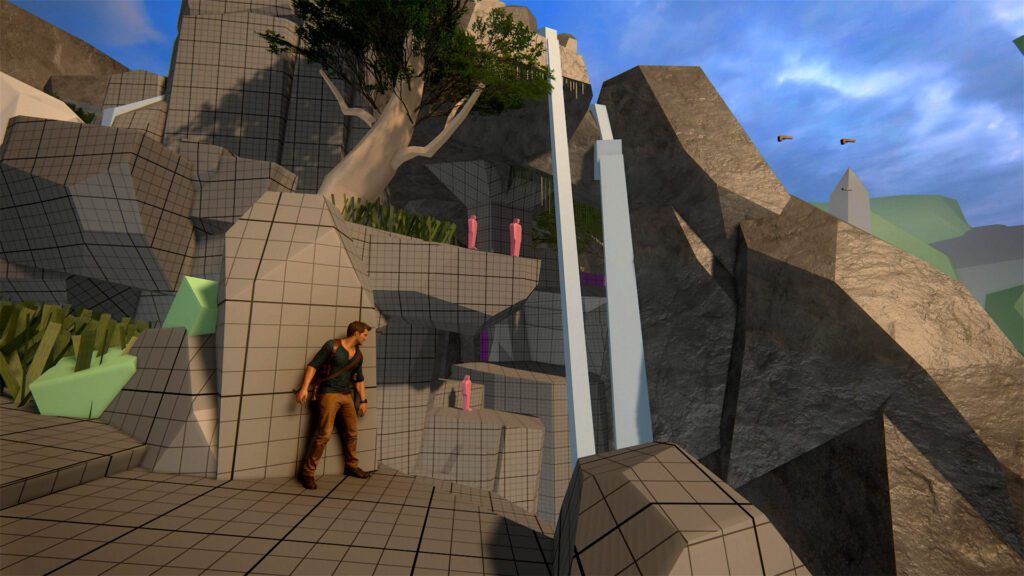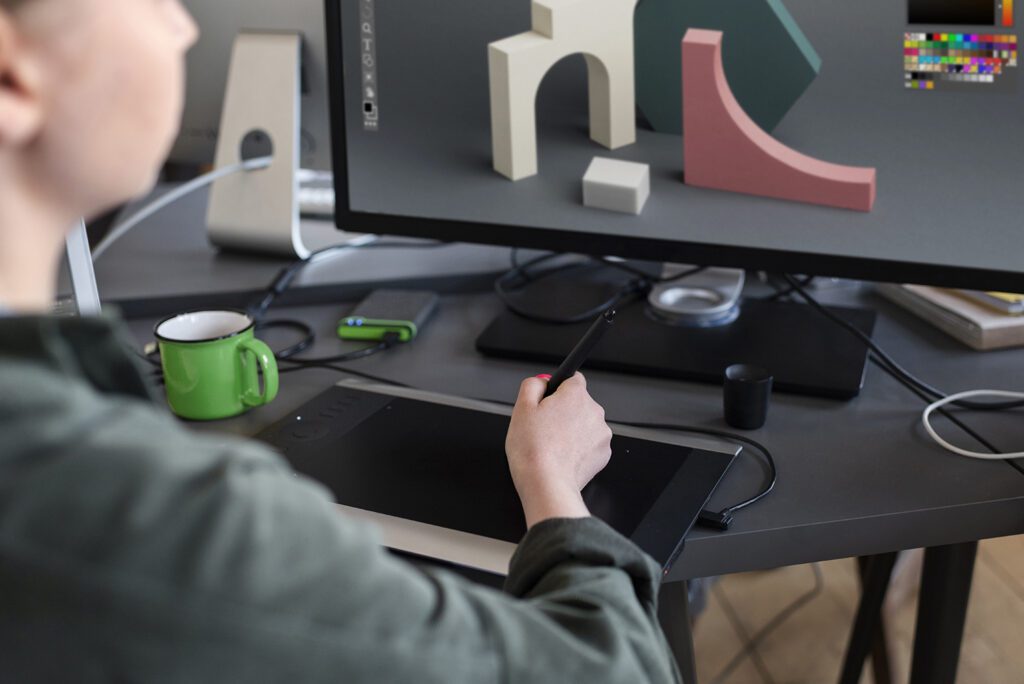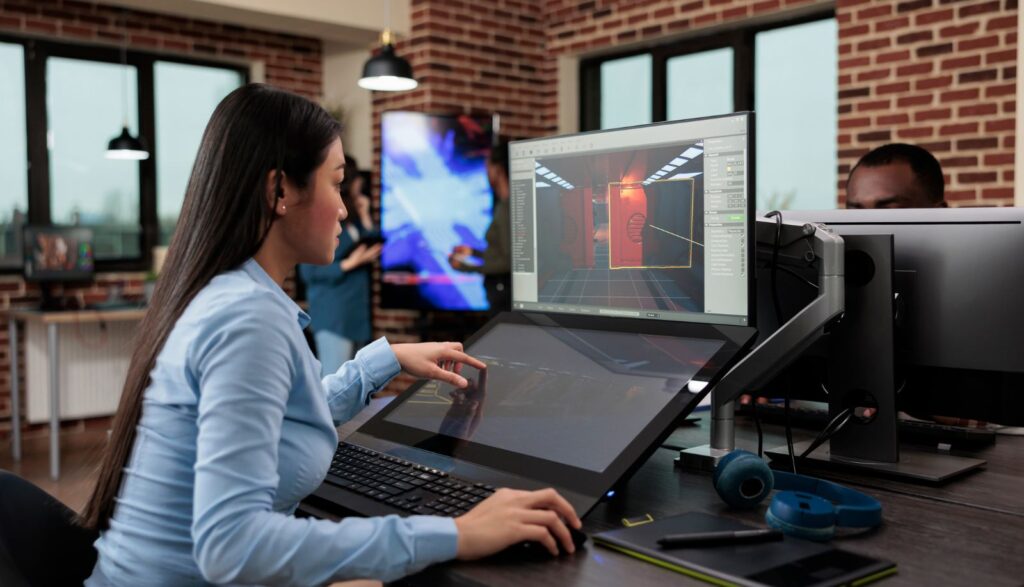For years now, video games have become a popular media in pop culture. Long are the days when the ins and outs of the video game universe belonged to only a few. Still, many video game aficionados, especially when they start thinking about entering the industry on a more professional level, ask themselves: What is game design, exactly?
Game design is an intricate field that combines creativity, technology, and psychology to create engaging and enjoyable experiences for players. It is not to be confused with game development — design focuses on concepts, while development focuses on the practical and technical aspects of the production of a game.
At its core, game design involves crafting the rules, mechanics, storylines, and aesthetics that make up a game, ensuring all these elements come together seamlessly to deliver a cohesive and captivating experience.
So let’s delve deeper to understand this fascinating discipline and why it’s such a crucial component of the gaming industry!
Read also: What’s the difference between game design and game development?
What is game design? The fundamentals of game design

Game design is often defined as the art and science of creating games. It involves the conception and development of the game mechanics, systems, and rules that define how a game is played.
Game designers are the architects of the game world, responsible for constructing engaging gameplay that keeps players invested. The primary goal is to create experiences that are not only fun but also challenging and rewarding, providing a balance that keeps players coming back for more.
There are several key elements that game designers focus on:
Game mechanics
These are the core rules and systems that govern gameplay. Mechanics dictate how players interact with the game world and achieve goals.
Examples include jumping mechanics in platformers, shooting mechanics in first-person shooters, and resource management in strategy games. Well-designed mechanics are intuitive and enhance the player’s engagement with the game.
Gameplay loop
This refers to the cycle of actions players repeatedly perform in the game, providing structure and pacing. A good gameplay loop is satisfying and can range from simple (like in puzzle games) to complex (like in role-playing games).
It involves a sequence of events that encourages the player to continue playing, such as completing a task to earn a reward, which then motivates them to start the cycle again.
Story and narrative
A compelling story can elevate a game from merely enjoyable to deeply immersive. Game designers often work closely with writers to create narratives that provide context for the gameplay, giving players a reason to care about their actions within the game world.
The narrative can be linear, like in traditional story-driven games, or dynamic, where player choices affect the outcome.
Aesthetics and art design
Visuals play a significant role in game design, contributing to the overall atmosphere and player immersion. Game designers collaborate with artists to create visually appealing worlds that align with the game’s theme and mechanics. This includes character design, environment art, user interface, and more.
By the way, keep in mind that game design differs from game art, as you can read in our complete comparative guide.
User experience (UX) and user interface (UI)
UX and UI design are critical for ensuring that players can easily navigate the game and understand how to play. A well-designed UI should be intuitive and unobtrusive -thus allowing players to focus on the game without being confused by complex controls or unclear objectives.

You may also like: Game design principles – 10 main tips for success
The role of a game designer
At the end of the day, a game designer wears many hats throughout the development process. They must be creative thinkers, capable of generating innovative ideas and translating them into playable concepts.
At the same time, they need to be analytical – able to evaluate what makes a game enjoyable – and identify areas that need improvement. Game designers work closely with other team members, including programmers, artists, writers, and producers.
They are often responsible for conceptualizing the game by brainstorming ideas and defining the game’s core concept, including its genre, style, and target audience. The initial concept is crucial as it lays the foundation for all subsequent development.
Prototyping is another key part of the design process, where designers create early versions of the game to test mechanics and gameplay ideas. This allows them to experiment with different concepts and identify what works before committing to full-scale production.
Another big aspect of game design is balance – which is essential in game design nowadays, especially in multiplayer games. A well-balanced game offers a fair challenge to players, providing just the right level of difficulty to keep them engaged without feeling frustrated or bored.
Game designers constantly tweak mechanics, enemy difficulty, resource distribution, and other elements to achieve this balance.
Finally, based on feedback from playtesting and the player base, game designers are constantly making adjustments to improve gameplay, fix bugs, and enhance the overall experience. This stage is crucial for ensuring the game remains polished and enjoyable.

Game design is a jewel in an ever-growing entertainment industry
Game design is at the heart of the gaming industry. A well-designed game can captivate players for hours, building a loyal fan base and generating significant revenue. Conversely, poor game design can lead to frustration and disengagement, causing players to abandon the game early.
In recent years, the importance of game design has only grown as the industry has expanded. With the rise of mobile gaming, virtual reality (VR), augmented reality (AR), and the metaverse, designers have more opportunities than ever to create innovative experiences.
A recent big part of what is game design is the increasing using data and analytics to inform their designs, understanding player behavior to craft experiences that are tailored to different audiences.
Moreover, game design has extended beyond traditional entertainment. Serious games, which are designed for purposes beyond pure entertainment (such as education, training, or therapy), rely heavily on good design to effectively engage users and achieve their objectives.
How to learn and become a video game designer
For those interested in pursuing a career in game design, there are many educational paths available.
You see, many universities and colleges now offer specialized programs in game design – covering topics such as programming, art, storytelling, and user experience. There are tons of online courses and resources that provide hands-on learning opportunities for aspiring designers, as well.
Beyond formal education, though, aspiring game designers should play a wide variety of games and critically analyze them to understand what makes them successful. Creating your small games or mods can also be a great way to practice and build a portfolio!

In essence, game design is about creating engaging and meaningful experiences for players. It’s a field that requires a mix of creativity, technical skill, and a deep understanding of what makes games fun and rewarding.
Main Leaf – empowering game designers and developers
As the gaming industry continues to evolve, game design will remain a crucial element in crafting the next generation of interactive experiences. We here at Main Leaf, over our 12 years of experience in the game development industry, have seen firsthand the role of a game designer become more and more important.
We understand that fully – hence why we can help you overcome hurdles and ensure your game reaches its full potential. So contact us today to begin planning your next project with passionate professionals! We’ll respond within 24 hours at most.

